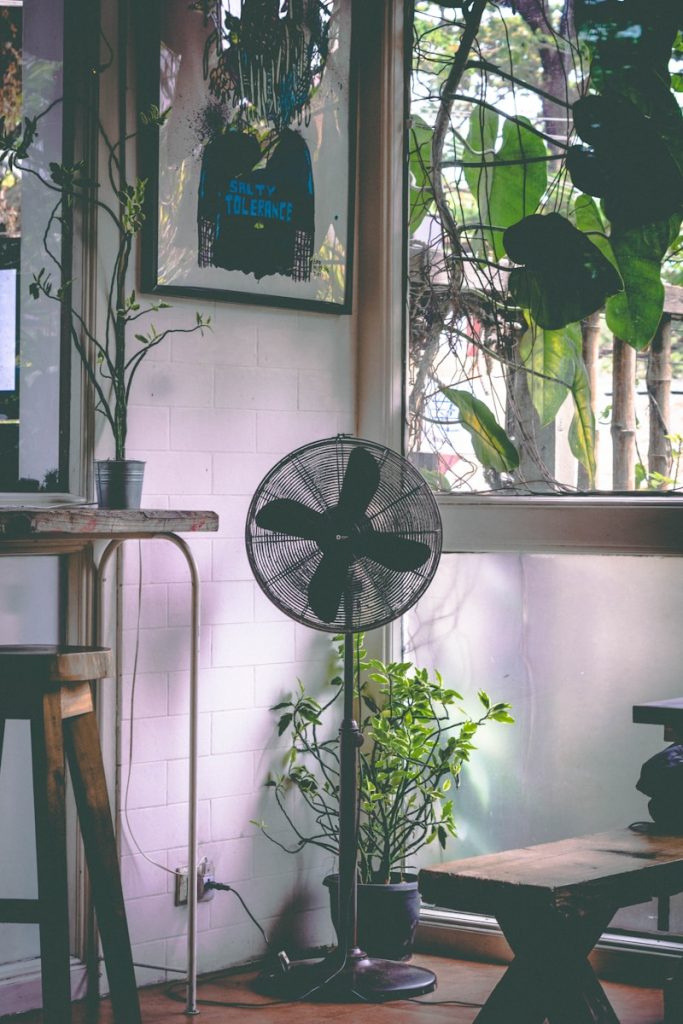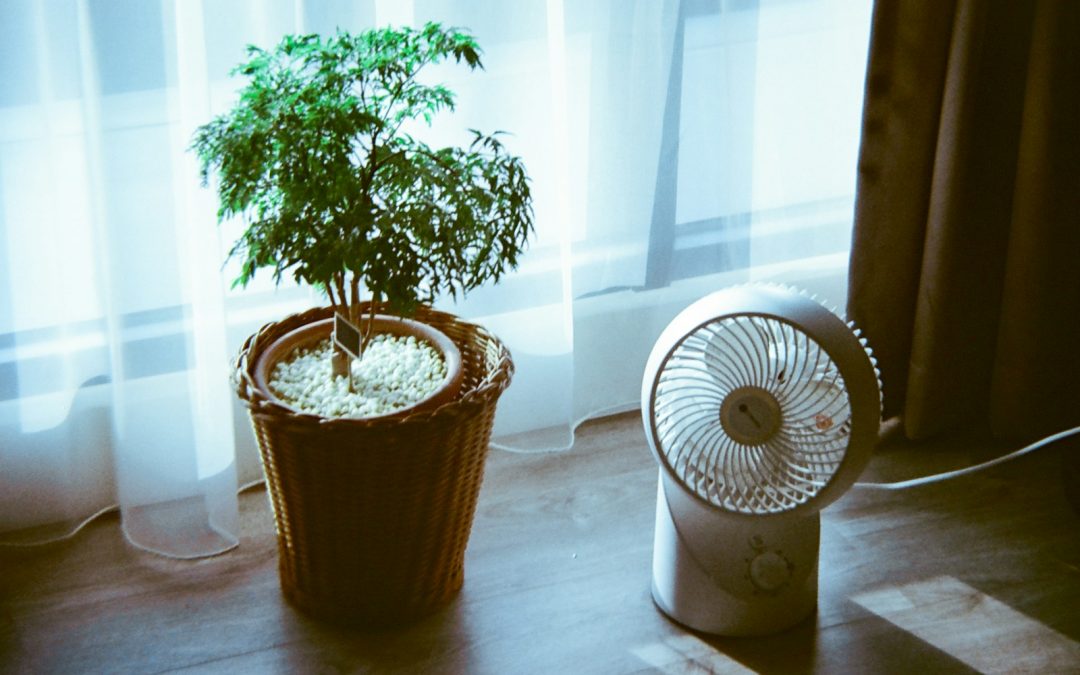Contents
- 1 How Air Circulation Affects Indoor Plant Health (The Overlooked Growth Factor)
- 1.1 Why Air Circulation Matters for Indoor Plants
- 1.2 The Hidden Dangers of Stagnant Air
- 1.3 Simple Ways to Improve Air Circulation Indoors
- 1.4 How Much Air Movement Is Too Much?
- 1.5 The Connection Between Airflow and Humidity
- 1.6 Seasonal Airflow Adjustments
- 1.7 Natural and Affordable Airflow Solutions
- 1.8 Affiliate Tip (Naturally Integrated)
- 1.9 Related Articles
- 1.10 Final Thoughts on Air Circulation and Plant Health
- 2 Prevent Mold and Fungus in Indoor Soil
How Air Circulation Affects Indoor Plant Health (The Overlooked Growth Factor)
Most indoor gardeners focus on watering, sunlight, and soil — but air circulation is the one factor often forgotten. Poor airflow can lead to yellowing leaves, fungal growth, and slow plant development.
Understanding how air movement affects your indoor plants can make the difference between good growth and truly thriving greenery. Let’s break down why air circulation matters and how to improve it easily at home.
Why Air Circulation Matters for Indoor Plants
Plants breathe too. Through a process called gas exchange, they absorb carbon dioxide and release oxygen and moisture. Without proper airflow, humidity and heat can build up around leaves, creating a perfect environment for pests, mold, and disease.
Good air circulation helps:
Strengthen plant stems
Regulate humidity levels
Prevent stagnant air and fungal issues
Support photosynthesis by keeping carbon dioxide moving
Reduce pest infestations like fungus gnats and spider mites
The Hidden Dangers of Stagnant Air
Still air can quietly harm your plants over time. It often leads to:
- Fungal growth: Mold and mildew spread faster when moisture lingers.
- Weak stems: Plants grown in still air often become thin and floppy.
- Uneven temperatures: Air pockets can trap heat near windows or lights.
- Pest hotspots: Fungus gnats and spider mites thrive in stagnant zones.
If you’ve noticed slow growth, leaf spots, or musty smells, poor airflow could be the cause.
Simple Ways to Improve Air Circulation Indoors
You don’t need a fancy setup to keep air moving. These simple strategies work for any space:
1. Space Out Your Plants
Crowded plants trap moisture. Leave 6–12 inches between each one to allow air to move freely. Grouping too closely can also make it harder for light to reach all leaves evenly, which impacts growth.
2. Open Windows (When Possible)
A few minutes of fresh air daily can drastically improve oxygen levels and temperature balance. Even in cooler months, short bursts of ventilation help reset indoor humidity.
3. Use a Small Oscillating Fan
A compact oscillating fan on a low setting keeps air circulating gently — preventing fungal buildup and strengthening stems.
You can find quiet, energy-efficient fans for indoor plants on Amazon that fit neatly on shelves or floors.
4. Use Exhaust or Ceiling Fans
If your plants are in kitchens or living rooms, ceiling fans or exhaust systems can prevent hot air buildup and regulate humidity. Try reversing ceiling fan direction in winter for a gentle, upward airflow.
5. Add an Air Purifier
For dusty environments, a HEPA air purifier helps clean particles that settle on leaves while improving airflow. Cleaner air also helps plants photosynthesize more effectively.
6. Rotate Plants Regularly
Rotating plants every few weeks ensures even airflow and balanced light exposure on all sides. This prevents one side from staying too moist or shaded.

How Much Air Movement Is Too Much?
While airflow is crucial, too much direct wind can dry out plants. Keep fans on low speed and aim them to move air around plants, not directly at them.
You’ll know it’s too strong if leaves start curling or soil dries unusually fast.
Pro tip: Use a timer or smart plug to run fans for short intervals throughout the day — this keeps the air fresh without stressing your plants.
The Connection Between Airflow and Humidity
Air circulation and humidity work hand-in-hand. When air becomes stagnant, humidity collects on leaf surfaces, creating a breeding ground for disease. But if the air moves too fast, humidity drops too low, causing dry leaf tips.
The key is balance — gentle, consistent airflow helps maintain a stable microclimate where plants can breathe and grow naturally.
If your home’s air is dry, consider pairing a mini humidifier with a small fan. This combo prevents both excess moisture buildup and dehydration, keeping your plants in perfect equilibrium.
Seasonal Airflow Adjustments
In Winter
Homes are closed up and heaters dry the air. Plants still need circulation, so run fans gently for short periods and consider a humidifier if leaves dry out.
Also, avoid placing plants directly near radiators or vents — the airflow there is too hot and dries the soil unevenly.
In Summer
Natural ventilation is easier — just avoid placing plants in the direct path of strong air conditioners or open windows with hot drafts. A steady, indirect breeze is best.
Natural and Affordable Airflow Solutions
Not all airflow improvements require gadgets. You can also:
Rearrange your plants occasionally to improve spacing.
Keep windowsills clear to let natural drafts flow through.
Wipe dust off leaves regularly to allow better gas exchange.
Mix in tall and short plants — this breaks up airflow and improves circulation patterns in clusters.
These low-cost changes often improve your plant health as much as any device.
Affiliate Tip (Naturally Integrated)
Good airflow doesn’t have to mean expensive equipment.
A small oscillating fan or compact air purifier can make a big difference for less than the price of a new houseplant. You can find both on Amazon — ideal for keeping indoor plants strong and disease-free.
Related Articles
- Why Indoor Plants Turn Yellow
- Simple Indoor Plant Maintenance Routine
- How to Improve Indoor Plant Drainage
Final Thoughts on Air Circulation and Plant Health
Healthy airflow is one of the easiest ways to prevent problems before they start. With gentle air movement, you’ll notice sturdier stems, fresher leaves, and fewer fungal issues — all without changing your watering or lighting routine.
Give your plants the fresh air they deserve — it’s the simplest upgrade you can make to your indoor garden today.
For more airflow guidance, check out The Spruce’s houseplant air circulation guide.
RELATED MAINTENANCE GUIDE
Prevent Mold and Fungus in Indoor Soil
Learn simple, proven methods to stop soil mold before it spreads — and keep your plants healthy all year round.

